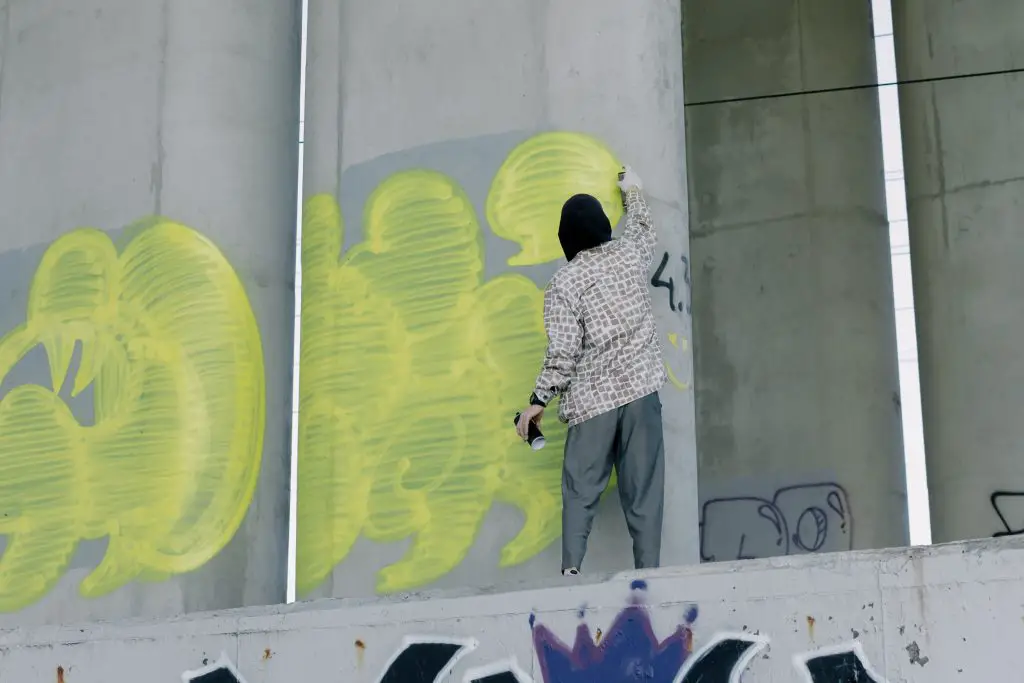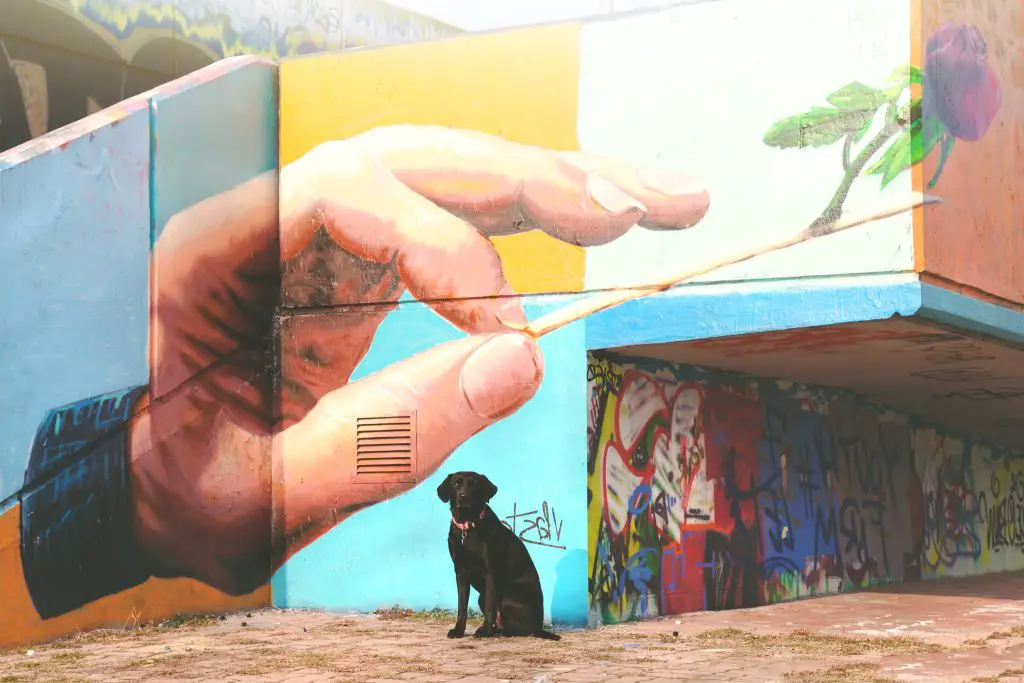What is the difference between street art vs graffiti? This is a question that often confuses people. The two terms are often used interchangeably, but there is a big difference between the two. In this article, we will discuss the differences between street art and graffiti and why it matters.
What Is A Street Art?

Street art is an art form considered to be any art that is created in public spaces. People who do street art is called street artist. This includes murals, graffiti, street performance art, and any other kind of visual art that can be found in urban environments.
Street artists often use public spaces as their canvas, using the city streets to showcase their work. street art murals are a popular form of street art and can be found in many large cities worldwide.
While graffiti is often considered to be a form of street art, not all street artists consider themselves to be graffiti artists. street art is a broad term that can encompass many different art forms, making it a truly unique and diverse form of expression.
What Is A Graffiti
Graffiti is a form of street art that has been around for centuries. It is often seen as vandalism, but many graffiti artists see it as a form of self-expression, political and social commentary, and public art.
Graffiti artists often use spray paint to create their designs, and they often choose to write their names or other graffiti writers. Other graffiti artists may choose to tag areas with their names or initials. Some people see graffiti as an eyesore, but others see it as a form of urban art.
What Are Street Artists?
Street artists are artists who primarily display their work in public places, often on city walls or other urban surfaces. While street art has been around for centuries, it was popularized in the late 20th century as part of hip-hop culture. Many famous street artists emerged from this scene, including Keith Haring and Jean-Michel Basquiat.
Today, street art continues to be a vital part of urban culture, with artists using it to express social and political commentary. It also often provides a creative outlet for urban youth, who may not have access to traditional art forms. Whether Spray-painting a mural or wheat-pasting a poster, street artists add color and life to city streets, making them more vibrant and exciting places to be.
What Are Graffiti Artists?

Graffiti artists are individuals who aim to produce contemporary graffiti. They are often either pure graffiti artists or graffiti artists who have moved into the art world. While graffiti has been around for centuries, it was not until the early 2000s that graffiti began to be taken seriously as an art form.
In recent years, graffiti artists have gained international recognition for their inventive and stylish works of art. However, graffiti remains a controversial form of expression, and graffiti artists often struggle to gain acceptance within the mainstream art world.
Nonetheless, graffiti artists continue to push the boundaries of what is possible with spray paint and murals, and their work can be found in cities all over the world.
The History Of Street Art And Graffiti
Graffiti and street art are often considered contemporary phenomena, but their history goes back much further than many people realize. Graffiti predates street art by centuries, with early examples dating back to the Roman Empire.
Graffiti was initially used as a form of communication, with messages scrawled on walls to relay information or political opinions. In the modern era, graffiti began to be seen as vandalism, and graffiti artists were often treated as criminals.
However, in the late 20th century, graffiti began to be seen in a new light as an art form worthy of respect and admiration. Today, graffiti and street art are appreciated for their color, energy, and creativity, and they have become an essential part of the urban landscape.
How The Two Forms Of Art Have Evolved Over Time
Graffiti art and street art have evolved a great deal over the years. graffiti has been around for centuries, with examples dating back to ancient Rome. Street art, on the other hand, is a relatively new form of expression.
While graffiti has often been associated with crime and vandalism, street art is often seen as more positive and constructive. In recent years, graffiti artists have increasingly been hired to create murals and other public artworks. This has helped to change the perception of graffiti, and it has also led to increased opportunities for graffiti artists to showcase their work.
At the same time, street art has become more popular, with artists using a variety of mediums to create colorful and engaging displays. As both forms of art have become more visible and accepted, they have continued to evolve.
Differences Between Street Art And Graffiti
Street art and graffiti are often seen as the same, but there are some key differences between the two. Graffiti is usually unauthorized, while street art is typically created with permission from the property owner.
Graffiti is also generally more straightforward in terms of both form and content, while street art often incorporates more complex designs and messages.
Finally, graffiti is typically created quickly and impulsively, while street art is often planned and executed with more outstanding care. These differences may seem small, but they have a significant impact on the look, feel, and meaning of the final product.
The Benefits Of Street Art Over Graffiti
It’s often said that art is in the eye of the beholder. This is especially true when it comes to street art and graffiti. To some, graffiti is an eyesore that should be removed immediately. But to others, it’s a form of self-expression that can brighten up even the dullest spaces. So what’s the difference between street art and graffiti? And which one is beneficial to society?
Street art is usually created with permission from the property owner, while graffiti is created without permission. Street art is also typically more complex and detailed than graffiti, which is often nothing more than tags or simple words sprayed on a wall. But while street art may be more aesthetically pleasing than graffiti, that doesn’t necessarily make it more beneficial to society. Some argue that graffiti can have a positive impact on communities.
Graffiti has been shown to deter crime, as it conveys that the community is not tolerant of criminal activity. It can also help to build community pride and foster a sense of ownership among residents. And in some cases, it can even be used to raise awareness about critical social issues.
For example, graffitied messages about racism or sexism can help to spark meaningful conversations about these topics. So while not everyone may appreciate graffiti, it’s important to remember that it can have a positive impact on society.
Final Thoughts
So, what’s the difference between street art and graffiti? The answer is not always clear-cut, but street art generally refers to legal pieces and is often sanctioned by the government or property owners, while graffiti is usually unauthorized.
Street artists use more traditional methods like spray paint or stickers, while graffitists often rely on markers or aerosols. There’s also a bit of a hierarchy among street artists and graffitists – the former see themselves as true artists who create beautiful pieces for public consumption. In contrast, the latter is seen as vandalizing thugs.
However you look at it, there’s no denying that street art and graffiti are both fascinating forms of expression that add character (and controversy) to our cities.

